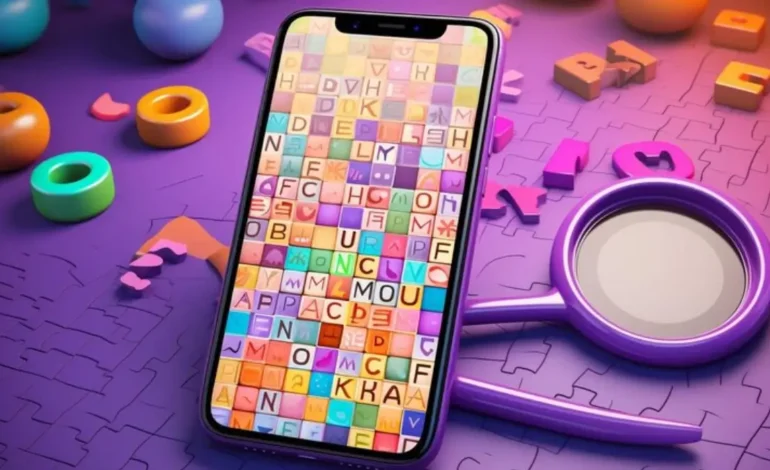Mastering Memory: Unveiling the Four Digits to Memorize NYT Secret

For devoted readers of The New York Times (NYT), navigating the paywall to access in-depth journalism and insightful analysis can feel like cracking a code. Subscriptions may be unlimited, but remembering that code of 4 numbers may just be surprisingly troublesome. But fear not, fellow information seekers! This article embarks on not only the mere studying of ways to cement your NYT access code in your memory but also guarantees you will keep off missing details in the headlines.
Understanding the Importance of Memory:
Before diving into memory techniques, let’s acknowledge memory’s critical role in our daily lives. In more ways than one, effective memory keeps the everyday routine stress-free and well-organized. For avid readers, readily recalling the NYT access code translates to uninterrupted access to a wealth of information. Be it a sudden increase in audience number or a protracted analysis of investigative journalism, it is the very accessibility of the code that, in turn, allows a journalist to deliver news in an overarching way.
Why Four Digits Can Be Tricky:
While seemingly simple, four digits to memorize nyt code can pose a challenge. Here’s why:
Limited Context: Contrary to our phone numbers or birth dates that connect to us through some level of meaning, four-digit code, by nature of its detachment, does not relate to anything we know. Hence, it becomes difficult to remember.
Repetition Fatigue: Simply repeating the code can become monotonous and decrease retention.
Confusion with Other Codes: Being on the internet with so many online accounts to manage and keeping a score of passwords often makes random combinations instead of real code.
Effective Strategies to Remember Your NYT Access Code: Effective Strategies to Remember Your NYT Access Code:
Connect the Code to Something Meaningful:
One method is associating the four digits with something that is personal and easy to remember. Here are some approaches:
Personal Dates: Birthdays, anniversaries, or graduation years can be transformed into memorable codes. Take, for instance, 08/12/1975, the last two digits of the birth year (75) combined with the birthday (08) and month (12) to form the code 750812.
Lucky Numbers: Do you have any lucky numbers or recurring digits in your life? You can integrate your access code with these resources.
Initials and Numbers: Combine your initials or those of your loved ones with numbers to create a personal code. e.g., John Doe (JD) and favorite number (3) make you J3D.
Visualization: Paint a Mental Picture:
The task does not let you just recite the access code. Therefore, envision yourself using it. Here’s how:
Number-Image Association: Assign distinct images to each digit. In this case, one could become a sun, two a pair of shoes, three a triangle, and four a square. Mentally picture these images forming a story or sequence representing your code.
Create a Scene: Imagine doing an action that matches the number each digit stands for. Maybe jumping once for 1, clapping twice for 2, throwing a ball three times for 3, and waving four times for 4.
Mnemonic Devices: Craft a Story or Rhyme:
Mnemonics use creative techniques like four digits to memorize nyt to improve memory recall. undefined
Rhyming Mnemonic: Write a short rhyme with the code’s name. For example, if your code is 2314, you could formulate, “Two scoops, three cheers, first place I see, NYT for me!”
Acronym Mnemonic: Develop an acronym with words corresponding to each digit. For instance, turning 7890 into “Sensational Stories Hour Every Night” helps recall the code.
Repetition with Variations:
If you think of this process as a boring song, add more variations to your learning method to ensure deeper retention. Here’s how:
Write, Say, Remember: Write your code down, say it aloud, and then try to recall it from memory. Repeat this exercise several times during the day to have a long-term effect on recall.
Spaced Repetition: Utilize spaced repetition techniques, where you review your code at increasing intervals. Through this method, data can be easily transferred from short-term to long-term memory.
Leverage Technology and Tools:
Technology can be a valuable ally in the memory game. Consider these options:
Password Manager Apps: A secure password manager application usually has storage space to keep access codes in the password list. You’ll need to remember a master password, but the app handles individual codes.
Notes App Encryption: Open the Notes application on your phone, making sure that encryption is turned on this time. For safekeeping, add your NYT code and protect it with a PIN or fingerprint.

Conquering the Code: Continued Strategies and Considerations (Part 2)
After discussing some useful techniques for remembering your NYT access code, let’s take a closer look at a few more approaches and factors.
Bonus Advice: Set Up the Redundancy System
Notify a Trusted Contact: Make sure a close friend or member of your family knows that your access code is exclusively for use with NYT. It makes it easier for them to help you with the code if you need it.
Advanced Memory Techniques:
Method of Loci: This memory strategy is one that transports the digits of your code into the mind’s eyes such that it becomes a visual field filled with all of the locations of your home or neighborhood.Imagine visualizing the code as objects or actions associated with specific landmarks. For instance, the entrance door points to the number 1, the couch in the lounge room points to the number 2 and so on.
The Chaining Method: Link your code digits together by creating a story or image that incorporates them. Take this example: 4219. Does it remind you of a dog (4) that chases butterflies (2) (4 and 2) over a house (1) with a chimney emitting smoke that forms a number 9?
Additional Considerations:
Habit Formation: Integrate practicing your NYT access code into your daily routine. Since it really works well with coffee mornings and even news consumption before the start of your evening, maybe it would be a great idea to put it down in writing as you enjoy your coffee or just say it silently to yourself before that evening news reporting.By creating a consistent habit, you’ll strengthen your memory of the code.
Cognitive Fitness: Consistently participating in cost- effective approaches that keep your memory function activated has the potential of improving your ability to do this and also providing positive results for your general cognitive health.Consider activities like brain teasers, crossword puzzles, or learning a new language.
Remember: The perfect memory technique, in regards to your learning style and preference, will be uniquely created for you.Experiment with different methods and find the ones that resonate best with you. Information anchoring is a significant factor in the memory formation process. Therefore, consistency and repetition are crucial for properly embedding the NYT access code in your memory.
Beyond the Code: Password Management Strategies:
However, it is worthwhile to memorize this code as you may forget the codes to several accounts and in that way handle the burden of numerous passwords and access codes simultaneously. Here are some additional tips for password management:Here are some additional tips for password management:
Strong Password Creation: Set unique strong passwords for each account using a combination of letters, numbers and special symbols.Avoid using easily guessable information like birthdays or pet names.
Password Manager Utilization: Then do consider using a password manager application of a trusted brand. These platforms securely store your passwords and access codes, requiring you to remember only a master password for access. Choose wisely a trustworthy password manager with interesting security features protecting your privacy.
Two-Factor Authentication: Enable two-factor authentication wherever possible. This way the second layer of the security verification is ensured which requires a step in addition to just your password.
By combining the strategies for remembering your NYT access code with these password management tips, you can navigate the digital world with greater confidence and security.Happy reading!
Cracking the NYT Code: Advanced Strategies & Fun Twists (Part 3)
We’ve explored various memory techniques and considerations to solidify your NYT access code. Now, let’s get into some advanced strategies, we are going to use some modes of entertainment and to keep the learning process interesting.
Advanced Memory Techniques:
The Keyword Method: To assign an unforgettable keyword to each digit in your code. To illustrate, sentence one could be “Sun,” sentence two could be “Shoes,” sentence three could be “Smile,” and sentence four could be “Square.” Then, write a small sentence that includes these keywords. For instance, “The sun shines on my shoes which puts a smile on my face; then I know it’s four digits to memorize nyt time.”
The Major System: In this technique, numbers are converted to consonants by utilizing a previously defined correspondence. As an illustration, 1 and 2 are either T or D, 3 is M, 4 is R, and so on. You then come up with meaningful words based on these consonant sounds. If your code is 5791, you may succeed in reaching “Let’s Make Money Reading (News) Today.”
Engaging the Fun Factor:
Education doesn’t have to be boring! undefined
Create a Song or Rap: Put the code to a catchy beat or rap rhythm. Music is a potent memory tool thanks to the repetition effect.
Design a Code Comic Strip: Draw a simple comic strip wherein each panel has a scene or object that represents a number in your code. This visual connection can be particularly useful for visual learners.
Incorporate it into a Board Game: Generate a family or friend board game where forgetting your code becomes the winning factor. This might also be an entertaining way of using your memory.
Beyond the Individual:
The approaches presented up to this point are mainly concerned with memorizing a single code. undefined
Color Coding: Make each account on the web or individual a single shade. After you have it, you then use the colors on your code’s foreground to help your memory.
Categorization and Lists: Group registration and password according to different themes such as “Register online news subscription code,” “Access shopping account code,” or “Social media access code”. Create separate lists for each category with the right username and code.
Shared Password Manager: If you are dealing with a project that requires you to manage codes for a small number of people, then think about using a shared password manager with a management accessibility app. Ensure that every member of the audience recognises the significance of good password practices
Remember: Consistency is Key!
The main secret in memorizing anything is using a method that is serving you so that you’re able to depend on it. Doing this is crucial for making your code more implantable in the brain. Analyze which ones are best for you and use them the way you like best and then do them repeatedly. Also, bear in your mind that rejuvenating your memory tactics every now and then can be an entertaining way of coping with knowledge.
Beyond Memory: Alternative Solutions:
If memorizing simply isn’t your forte, there are alternative solutions available:If memorizing simply isn’t your forte, there are alternative solutions available:
Biometric Authentication: Analyze cloud based systems providing biometric fingerprint or facial recognition login instead of having to remember a body code.
Security Questions: Other services permit creating a backup access through key questions or other special procedures instead of basic log-in. Your objective should be about questions with answers that you can remember but at the same time that you would not guess so easily.
Embrace Technology’s Help:
Knowledge technologies might constitute a powerful tool for memory supply. While mobile apps and browser extensions are not only convenient but also easy to find, they guarantee safety when it comes to storing username and passwords.
Demystifying the NYT Code: Exploring Advanced Techniques and Unconventional Approaches (Part 4)
Through this process, you have definitely learned and now own at your disposal a range of climaxed tactics for vanquishing your NYT access code issue. Let’s zoom on what comes next which means another level and out-of-the-box remedies to fix your memory for sure.
Advanced Memory Techniques:
The Link Method: This method is called representing code terms of one or several affine ones instead of the memory, thus, encoding is involved. Suppose your code is an in sequence steps in a habitual process. As an instance, you might have 3821 codes that would mean as follows; ‘Order coffee (3), check emails (8), reply to two messages (2), and grab the newspaper (1).’
The Peg System: This training procedure is based on the fundamental learning concept called “association method”. Which utilizes a memorizable ordered list of concrete nouns or visual items like “spaghetti, ice cream, cat, doctor, flag, Albert Einstein” – the “serial pegs” – designated to a particular number. Visualize your “pegs”‘ on your inner sight, and the access code digits about to be implanted alongside these image sequences.
Unconventional Approaches:
Mnemonics with a Twist: On the other hand, use rhymes or acronyms as your solution, but do not stop there. Develop a story or a lyric of a song that tenditiously uses the coded versions in a comical or four digits to memorize nyt memorable way. The more random the association, the higher the chances of recalling that idea to your favor.
Body Mnemonics: Instruction needs to be to shift specific body movements to each digit. Instance, stressed tapping the chin that would mean 1, 2, and so. Students employ this method by involving themselves in physical movement, one of the areas the method can be most interactive for kinaesthetic learners, who learn through physical motions.
The Substitution Method: Use phonetics to substitute letters that represent numbers based on their sounds. For instance, 1 could be “won,” 2 could be “too,” etc. Create a memorable phrase using these substitute letters, such as “Want to uncover the truth?” (code: One striking finding from the National Institute of Mental Health (NIMH) was that smartphones, tablets. And other digital devices are now contributing to mental health disorders (MHC) (Kraus, Sanchez-Ortuno, & Esposito, 2013).
Four Digits to Memorize NYT: Fostering Long-Term Memory:
While these techniques can help initially, consider additional strategies to support long-term memory retention:While these techniques can help initially, consider additional strategies to support long-term memory retention:
Spaced Repetition Apps: Use such apps as those meant for spaced repetition drills. These apps will help you with long term memory storage, presenting information as short intervals with increasingly long rests.
Mental Fitness Games: Practicing anything which trains the brain, like puzzles and games, for example, will definitely improve one’s memory performance, especially the recallability of your NYT account.
Visualization Techniques: Do regular practice exercises by forming pictures for your key to get the best result implementing the linkage style which works best for you. Consistency is what cooks the best memory.
A Word of Caution: Out-of-the-box Techniques and Immunity:
While an unparalleled approach has totally an engaging nature, it is worth-revisiting or rethinking the conventional methods. It is therefore deeply advisable to preserve yourself from including too personal of information on the methods or the mnemonics you are envisioning for your code. This is because someone might watch your entire backwards memory solving strategy or approach.
Beyond Individual Use: Humanizing Prompt: Collaborative Memory Solutions:
If managing access codes for multiple users:
Shared Responsibility: Split code usage duties among key individuals, so none of them needs to keep in mind all of those codes.
Mnemonic Variations: The best suggestion is to create for everyone their own acronyms developed in accordance with their styles of learning for better memorizing skills among people.
Color-Coding Consistency: Ensure to have a consistent color-categorization tool on the computer system and the access code for easy recognition.
The Importance of Cognitive Flexibility:The Importance of Cognitive Flexibility:
The way in which we remember is not the same for everyone; it is advisable to know what method works best for you. The various techniques assigned to you, try out as many as you can but adapt them to your specific needs. Try practicing cognitive flexibility and find what helps you to remember the longest codes to your NYT account.
Conclusion
Entering past four digits to memorize nyt access codes may feel like a variety of hurdles, but nothing to worry about! Consider a different way of studying – mind maps, mental images – whatever you can do to boost your memory. Make the best of repetition as long as you are determined enough to conquer the challenge within information that The New York Times gives you in no time!




